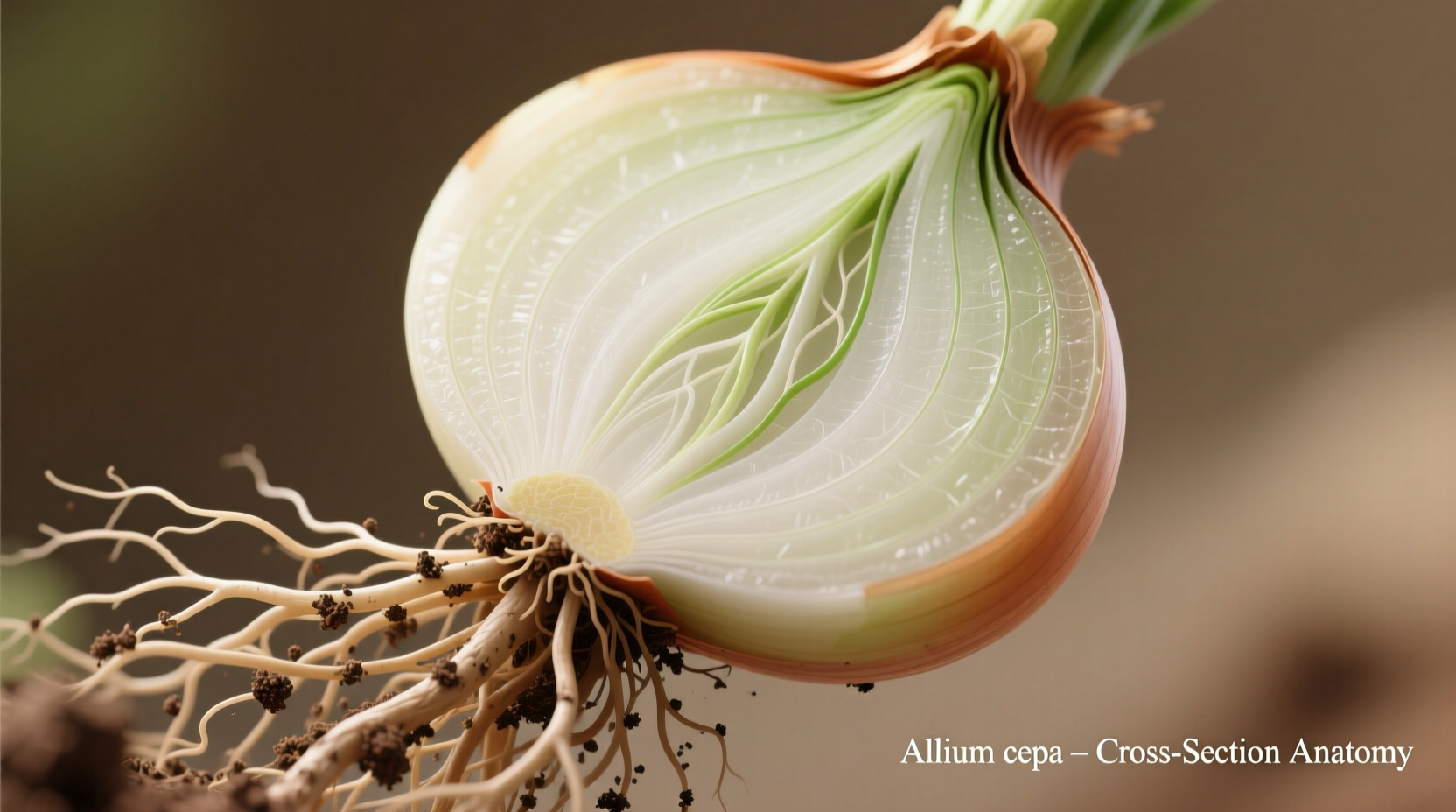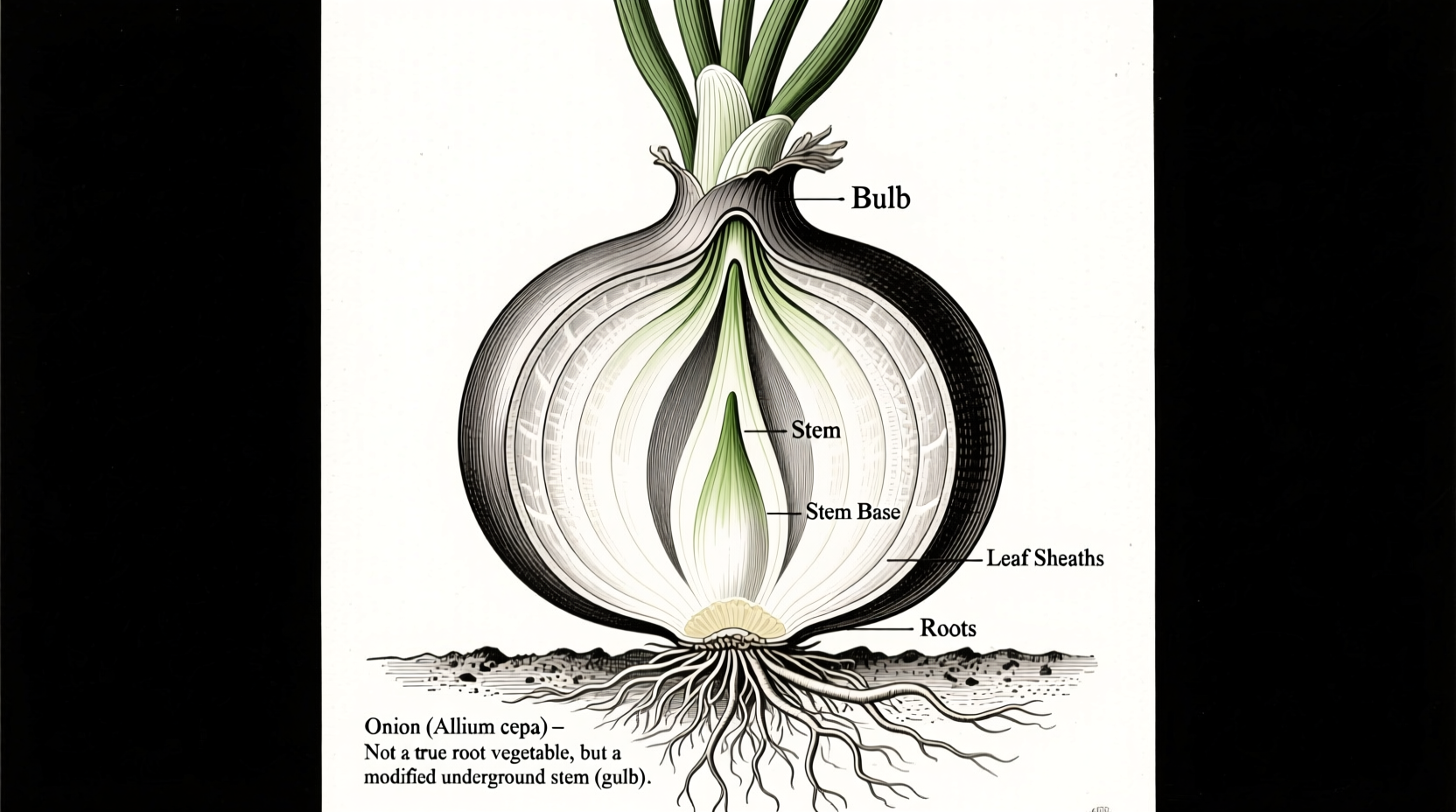No, onions are not root vegetables. Botanically classified as bulb vegetables, onions grow from modified leaf bases that form layered concentric rings. True root vegetables like carrots and beets develop from plant roots, while onions form from stem tissue at the base of the plant.
Understanding whether onions qualify as root vegetables matters for gardeners determining proper planting depth, chefs selecting appropriate cooking techniques, and nutritionists analyzing vegetable classifications. This clarification helps prevent common gardening mistakes and ensures accurate culinary applications.
Why Onions Don't Qualify as Root Vegetables
Many home cooks and gardeners mistakenly categorize onions as root vegetables because they grow underground. However, botanical classification depends on which plant part becomes the edible portion. Onions develop from modified leaf bases that form layered concentric rings around a short stem. The actual roots appear as thin, stringy fibers at the bulb's base.
True root vegetables like carrots, beets, and parsnips develop from the plant's taproot system. These store energy in their root tissue. In contrast, onion bulbs store energy in their leaf-derived layers. This fundamental biological difference explains why onions belong to the Allium family rather than root vegetable categories.
| Characteristic | Root Vegetables | Bulb Vegetables |
|---|---|---|
| Botanical Origin | Plant roots (taproot system) | Modified leaf bases |
| Storage Function | Energy storage in root tissue | Energy storage in leaf layers |
| Examples | Carrots, beets, radishes | Onions, garlic, shallots |
| Growing Pattern | Vertical growth downward | Horizontal layering outward |
Common Misconceptions About Onion Classification
The confusion between root and bulb vegetables stems from several factors. Since onions grow below soil surface, many assume they must be roots. Additionally, culinary contexts often group underground vegetables together regardless of botanical accuracy. Historical agricultural practices further complicated classification before modern botanical science established precise categories.
According to the USDA's Plant Database, onions (Allium cepa) belong to the Amaryllidaceae family and develop true bulbs composed of fleshy leaf scales. This classification differs from tubers (like potatoes) which form from swollen underground stems, or true roots like carrots that lack layered structure.

Practical Implications of Proper Classification
Understanding that onions are bulb vegetables rather than root vegetables affects several practical applications:
- Gardening: Bulb vegetables require different planting depths and spacing than root vegetables. Onions need shallow planting (1-2 inches deep) compared to carrots (1/4 inch deep)
- Storage: Bulb vegetables like onions need dry, well-ventilated conditions, while root vegetables often require higher humidity
- Cooking: The layered structure of bulbs responds differently to heat than solid root vegetables, affecting caramelization and texture development
- Nutrition: Bulb vegetables contain different phytochemical profiles than root vegetables, influencing their health benefits
Botanical Evolution of Vegetable Classification
Early agricultural societies grouped vegetables by appearance and usage rather than botanical accuracy. The ancient Greeks and Romans categorized onions with root crops due to their underground growth. Modern botanical classification emerged in the 18th century with Carl Linnaeus's taxonomic system, which distinguished between root, tuber, and bulb structures based on plant morphology.
Today, agricultural extension services like those from University of Minnesota Extension clearly differentiate bulb crops from root vegetables in their educational materials, helping both commercial growers and home gardeners understand proper cultivation techniques.
Why This Distinction Matters for Home Cooks
Knowing that onions are bulb vegetables rather than root vegetables helps home cooks make better culinary decisions. The layered structure of bulbs creates different cooking behaviors compared to solid root vegetables. When sautéing, onions release moisture differently than carrots, requiring adjusted cooking times. Their sulfur compounds react uniquely to heat, creating the characteristic sweet flavor during caramelization.
Professional chefs leverage this knowledge to maximize flavor development. Understanding vegetable classifications helps determine proper storage conditions, cooking techniques, and flavor pairings that enhance dish quality. This botanical precision separates casual cooking from professional culinary technique.
Conclusion: Clearing the Confusion
While onions grow underground like root vegetables, their botanical structure confirms they're bulb vegetables. This distinction affects gardening practices, storage requirements, cooking techniques, and nutritional understanding. Recognizing this classification helps both gardeners and cooks work more effectively with this versatile ingredient.











 浙公网安备
33010002000092号
浙公网安备
33010002000092号 浙B2-20120091-4
浙B2-20120091-4